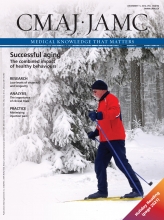Medical students experience a high rate of burnout and routinely getting “pimped” isn’t helping the problem. The term “pimp” — short for “put in my place” — is sometimes used by medical students to describe getting roasted in front of peers by medical residents during clinical rotations.
“It basically comes in the form of being asked a question, and if you don’t know the answer, the attending resident just piles on more and more questions that you don’t know the answer to,” says Alex Regenbogen, a fourth-year medical student at Brown University’s Alpert Medical School in Providence, Rhode Island. “The overall negative connotation of pimping is public shame.”
It’s one of among many causes of stress identified in a student-run survey at Alpert Medical School, Regenbogen explained Oct. 25 in a presentation at the International Conference on Physician Health in Montréal, Quebec. Regenbogen and several peers conducted the survey to address questions left unanswered by the “sparse literature investigating student opinions of burnout and its causes.”
Research suggests that about half of medical students experience burnout, the same rate as in the practising physician population, according to Dr. Tait Shanafelt, director of the Mayo Clinic Department of Medicine Program on Physician Well-Being in Rochester, Minnesota. By the time they finish residency training, up to 80% of future doctors have been burnt-out at some point, an alarmingly high number, considering the effect burnout can have on competency.
“Those with higher degrees of burnout had medical knowledge skills that were lower than those who were not burned-out,” Shanafelt said during a keynote address to the gathering.
The contributing factors to medical student burnout appear to vary by year of study. In the first two years, dedicated to classroom training, feelings of isolation can lead to stress. Medical schools can address this by encouraging collaboration, promoting study groups and creating a more collegial atmosphere by using a pass/fail evaluation scheme, rather than one that simply assigns grades.
“A pass/fail system makes it easier for people to not feel like we are competing with each other,” says Erin Valenti, a fourth-year student at Alpert who helped conduct the survey. “We switched to grading at some point in our second year, and the increase in tension was palpable.”

Contributing factors to medical student burnout appear to vary by year of study.
Image courtesy of © 2012 Thinkstock
In their third and fourth years, when medical students undertake clerkships, rotating through various specialties in clinical settings, things typically become ultracompetitive. At Alpert, students receive clerkship evaluations such as “meets expectations,” “exceeds expectations” and “exceptional.” The assessments can make or break applications for residencies.
“The difference between exceeding expectations and being exceptional is where you find yourself elbowing against other people,” says Regenbogen. “To be exceptional, you have to truly stand out.”
Despite the competitiveness, the experiences can be positive, though that appears to depend on the attitudes of those showing medical students the ropes. “Residents are the people who we work with closely on the wards, and their dissatisfaction becomes our dissatisfaction,” Valenti says.
Regenbogen concurs, suggesting there is evidence that “resident cynicism promotes medical student burnout.”
Valenti says that is entirely avoidable, no matter how overworked, tired and grumpy the resident. “Yes, they are there to do a job. They are there to learn. But they are also there as teachers. Maybe if the teaching role was more clearly delineated, they would know the appropriate way to teach a medical student, and the appropriate way to treat a medical student. You may be having a bad day, but that doesn’t mean everybody else should be having one too.”
Medical students can do their bit to reduce burnout through mechanisms such as discussion groups like one entitled “What’s Up with Us” recently held at Alpert, during which participants candidly shared their experiences. “Hopefully that will continue, because students really appreciated it,” says Regenbogen.
Efforts to incorporate such discussions directly into curriculum are rarely as effective, suggests Valenti. It is difficult to be completely open about personal health matters with professors. What if the person grading a reflective essay was the head of the emergency medicine program? Is a student hoping to enter that program likely to bare their soul about, say, a lengthy battle with depression?
“Probably not,” says Valenti. “It’s amazing what a difference it makes when you remove a faculty member from the situation.”











